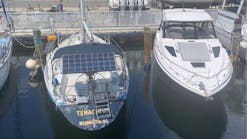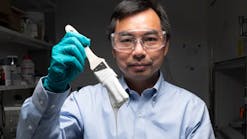In spite of the Environmental Protection Agency's newly reduced authority after the Supreme Court's controversial June 30 decision – which clearly will impact the United States' ability to meet greenhouse gas (GHG) emissions goals – the global effort to reduce those emissions is still moving forward.
Case in point is the recent announcement by Zurich, Switzerland-based Climeworks that it has broken ground on its newest and largest direct air capture (DAC) and storage facility. In February 2021, I wrote about negative-emissions technologies (NET) gaining momentum and specifically referenced Climeworks DAC technology, which removes CO2 from the air and stores it permanently underground.
Dubbed Mammoth, the newest plant is located in Iceland and is expected to become operational by 2024. It is Climeworks’ 18th project overall and the second commercial DAC plant.
Currently, the world’s largest existing DAC plant, with storage developed by Iceland-based Carbfix, was launched just a month after the United Nation's Intergovernmental Panel on Climate Change (IPCC) 2020 report was released. Named Orca, that plant had the capability of permanently removing a verifiable 4,000 tons of CO2 per year. For its part, Mammoth, has been significantly scaled-up in capacity, and when it becomes operational, will remove and store (using Carbix’s storage technology) 36,000 tons of CO2 per year.
According to Climeworks, Mammoth is the next step in its plan to achieve millions of tons of CO2 capture and storage by 2030, and achieve a gigaton of capacity by 2050. The company recently raised $650 million in capital in order to continue development and implementation of its large, modular, DAC technology on a global scale.
The Climeworks DAC plants use collector containers arranged around a central processing assembly, and can be remotely controlled and operated. All of the energy needed to operate the Orca plant is provided by a geothermal power plant. Because of their modular design, the collectors for both Mammoth and Orca can be stacked to increase capacity, and are intended to run on entirely on renewable or waste-produced energy. An independent life cycle assessment cited on its website indicates that the “grey emissions are below 10 percent.” In other words, for every 100 tons of captured CO2, at least 90 tons are permanently removed.
Collectors operate in two steps:
- First, the collector fans bring in air, allowing the CO2 to be captured on the surface of a highly selective filter material;
- Then, after the filter material is saturated with CO2 , the internal collector temperature is raised to 180-200°F. This causes the concentrated CO2 to be released and permanently stored in the ground.
Of course, Climeworks in not the only company developing DAC technology. It is interesting to note, however, that most of the major DAC developers are located outside of the U.S. So, it is doubtful that further limiting the EPA’s authority to lead U.S. efforts in addressing climate change will now encourage the innovation – and financial investment – here that will be required to reduce our country’s own sizeable carbon footprint.
##########
A regular contributor to HPAC Engineering and a member of its editorial advisory board since 2012, Clark, LEED AP, O+M, is a principal at Sustainable Performance Solutions LLC, a south Florida-based engineering firm focusing on energy and sustainability. Email him at [email protected].










